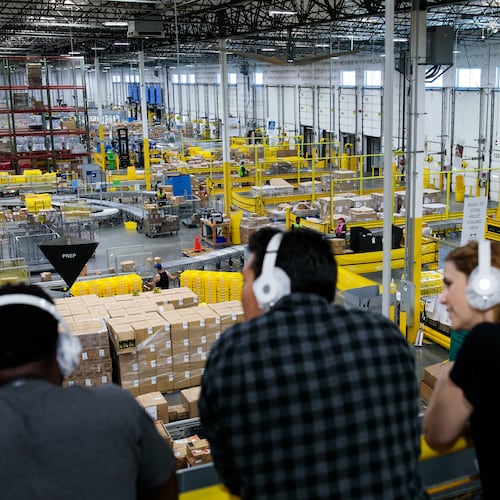If you think regular job interviews are stressful, you likely find panel interviews even more challenging.
Everything in the process just seems magnified — more pairs of eyes on you, more people asking questions and more folks to impress with your witty repartee. Which, by the way, is quantifiably more difficult to pull off with multiple people around a conference table.
Disregarding the job candidate’s discomfort, I often wonder about the overall effectiveness of the process. Last week a job seeker told me that she had experienced a panel with nine interviewers. Nine? At some point you can stop calling it a panel and, instead, label it an inquisition.
Of course, it’s possible that each of those interviewers represents a unique aspect of the company that has to be kept top-of-mind during a critical hiring process. More likely? My cynical self thinks there might be a little positioning going on there, with each individual intent on proving he or she is too indispensable to be excluded from a hiring process.
Oh well. In the end it doesn’t really matter why the room is crammed with people. The real question is simple: How to best handle the situation? I’ll break my advice into three categories to provide guidance:
Pre-interview
When you are first invited to interview with a company, you need to get the details. If this doesn’t come naturally, train yourself to develop an automatic response such as this:
“I’m excited to come talk with you about this position. Can you tell me whether there will be more than one interviewer in this meeting? Oh? Can you give me the names of the other people and their positions so I can be better prepared? Thank you. ... How do you spell that?”
You get the idea: polite but persistent. Don’t forget to nail the time and location.
Your next step is to learn about the people who will be present. Don’t resort to stalking, but do at least run Internet and LinkedIn searches to learn about their responsibilities or backgrounds.
Now, think about each interviewer. Based on each person’s role, what would you expect his or her interest to be in relation to the job you are seeking? For example, if your future boss is present, you can bet this person is interested in high performance with low maintenance. If the group includes colleagues from different departments, they may be watching for signs of arrogance (bad) or teamwork (good). If you assume everyone is acting from self-interest, you will gain a powerful strategic advantage in preparing for the meeting.
Finally, round out your pre-interview activities by making a packet of materials for each person. This can be as simple as a nicely printed copy of your resume, or it may include leave-behind samples from your portfolio. No need to customize the packets; just be sure you bring enough copies for all.
At the interview
The interview itself does not need to be stressful, as long as you stick to a few basic premises: Each person is there for a reason, each person wants to be recognized, and how you treat any individual will be noted by all.
With that in mind, go out of your way to shake everyone’s hand, even if it means walking around the table. Before sitting down, or immediately afterward, distribute the packets you have brought. Then pull out your pad of paper, and, if possible, surreptitiously make a quick diagram for yourself noting the names of each person and his or her place at the table. This will help keep the players straight.
When answering questions, remember to focus on the person who asked the question, but then move your eyes to include others in the room. When it’s your turn to ask questions, try to address a specific individual, but avoid favoring the same person over and over. A slight deference to the committee chairman makes sense, but not to the point of excluding others.
And, while smiling is almost always appropriate, humor often is not. Resist the temptation to make jokes when you have no assurance the others will share your humor.
After the interview
Your post-interview steps will feel familiar: handwritten thank-you notes for all, mailed the day of the interview. A separate follow-up letter e-mailed to the committee chairman will help reiterate your key strengths for the job, while a follow-up call within a week will emphasize your interest.
There. That wasn’t so bad, was it? Follow these steps and soon you’ll begin looking forward to panel interviews. Enjoy yourself.
Amy Lindgren owns Prototype Career Service, a career consulting firm in St. Paul, Minn. Reach her at alindgren@prototypecareerservice.com or at 626 Armstrong Ave., St. Paul, MN 55102.
About the Author
Keep Reading
The Latest
Featured


